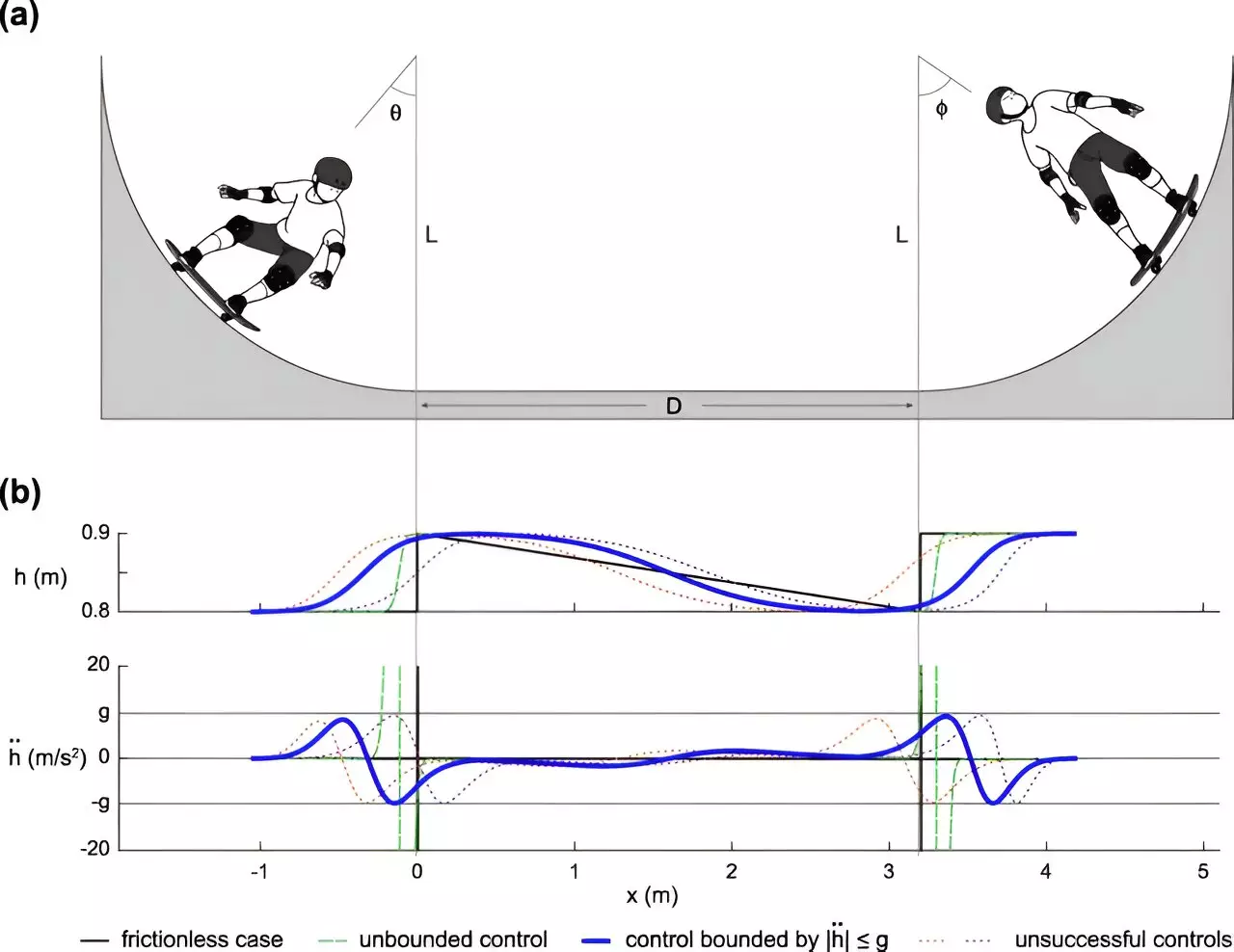Skateboarding is often perceived as a casual sport dominated by innovative tricks and stylistic flair. However, beneath the surface lies a complex interplay of physics, dynamics, and movement. Recent research conducted by a collaborative team from ETH Zürich in Switzerland, along with experts from The Institute of Statistical Mathematics and ATR Institute International in Japan, has illuminated some of the intricacies involved in the thrilling endeavor of skateboarding, particularly on half-pipes.
Half-pipes are a staple in skateboarding, resembling a horizontal cut of a pipe, where the structure forms a valley flanked by two inclined planes. Skaters utilize these structures to execute various maneuvers, employing gravity and their own body mechanics to gain speed and height. At its core, the act of skating on a half-pipe captures the cyclical nature of motion—moving from one ascent to a descent and back again. Each skate session is punctuated by basic rolling movements across the valley, culminating in the decision to either hop off or continue the rhythm of back-and-forth motion.
A vital aspect of sustaining momentum in a half-pipe is known as “pumping.” This motion involves the skater’s body shifting and adjusting to manipulate speed. When skaters crouch in the valley, they prepare to exert energy as they ascend the curve of the ramp, utilizing their weight and the board’s angle against the surface to convert gravitational potential into kinetic energy. The dynamic is akin to that of a child on a swing, where body movements dictate momentum and velocity.
This striking parallel was the focal point of the researchers’ model. By using swings as a foundational analogy, the team adapted existing physics models pertaining to pendulums and swings, which have already been scientifically analyzed. This analogy provided a framework to examine the mechanics behind human movement on a skateboard, leading to newfound insights.
Innovative Research Methodology
The team took a meticulous approach to developing their model. By analyzing videos of skateboarders executing tricks on half-pipes, they were able to observe live alterations to their mass and positioning relative to the skateboard and the ramp. By incorporating these factors, such as the angle of the skateboard and the skater’s center of mass, the team ensured their model closely mirrored real-world dynamics.
Their findings ultimately revealed an optimal pumping technique that maximizes speed; however, they were careful to highlight that this theoretical model might lead to unrealistic outcomes in practice, positioning skaters airborne beyond the confines of the pipe. This juxtaposition of theoretical physics and practical application serves to underscore the complexity of real-world physics phenomena.
Applications Beyond Skateboarding
The implications of this research extend beyond the world of skateboarding. The dynamics of pumping on a half-pipe provides a valuable model to enhance robotics. The researchers posited that their framework could offer insights into how robots might better traverse challenging terrains, adjusting to hills and inclines in a manner similar to skaters manipulating their bodies on a half-pipe. Such applications could lead to significant advancements in robot mobility, potentially allowing these machines to navigate environments that mimic the unpredictable nature of outdoor settings.
In an era where the intersection of physical activity and technology thrives, the findings from ETH Zürich and their collaborators shed light on fascinating dynamics often overlooked in sports sciences. As skateboarding continues to evolve, so too does our understanding of the physics at play. This study not only enhances the sport’s credibility within the scientific community but also opens doors to interdisciplinary innovation, suggesting ways to bridge the gap between human athletes and robotic counterparts. As researchers continue delving into the physics of sports, we may uncover more compelling insights that challenge our traditional understanding of movement and mechanics.


Leave a Reply